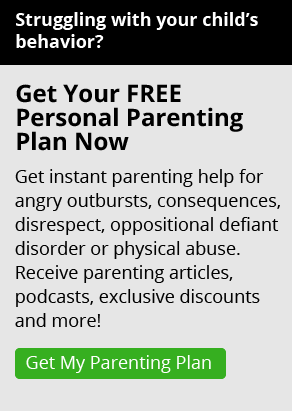When families call parent coaching, just about every call we get involves a question about consequences. Many parents struggle to find effective consequences while overlooking the importance of using rewards. We recommend establishing rewards or “incentive systems” for kids, which can be done easily using a behavior chart.
Behavior charts are important to consider for several reasons:
Clear expectations. When your expectations of your child are crystal clear, they are more likely to be successful.
You get more of what you pay attention to. James Lehman teaches that if you pay more attention to positive behaviors, you get more of them. Conversely, ignoring some of the less desirable behaviors causes them to fade away over time.
Immediate feedback. Kids get immediate feedback about their progress. They can see how well they’re performing simply by glancing at the chart, which allows them to self–correct if needed.
More motivation. Incentives are often more motivating for children than the threat of losing something they value, which can cause some kids to go into a downward spiral. If a kid makes one mistake and believes she will lose her phone indefinitely, then she might think, “What’s the point?” This is particularly true for elementary aged children and kids with ADD/ADHD.
Fewer Consequences. Many parents who call the Support Line feel as if they have nothing left to take away or that they are really limited when it comes to privileges that they can restrict. Using incentives gives kids something to earn and helps parents who are feeling stuck.
Recently, the parent coaching Team realized that we were recommending behavior charts quite often, but when it came to creating and implementing this system, up until now parents were left to their own devices. With that in mind, we decided to create some behavior charts to give parents easy access to these wonderful tools—and, of course, to make it easier for parents to put into practice.
We created a few different types of charts, each with its own specific set of instructions to explain how to implement it:
Single Behavior Charts. These charts are best if you want your child to work on one new skill at a time, such as doing things when asked or not interrupting when others are speaking. We created one for younger children and one for older children.
Multiple Behavior Charts. For those of you who have trouble with morning or evening routines, this one’s for you! This chart would also be suitable for any other multi–step process you want your child to work on, such as cleaning his room.
Chore Chart. Our chore chart will help you establish a chore schedule for your child. This is suitable if your child has multiple chores to do during the week.
Homework Progress Charts. These charts are intended to track your child’s homework–related tasks. There is a simple version and a more complex version, so you’ll be able to choose the style that is suitable for your child.
To download our free Empowering Parents Behavior Charts with instructions from our parent coaching team included:
Get My Free Behavior Charts
We also wanted to stress that there are some important things to consider when implementing a behavior chart. The first thing to keep in mind is that rewards are not bribes. A reward is established ahead of time, at a point when things are calm and going relatively well. For example, saying to your child, “I expect you to help me find the items on the grocery list today. If you stick to the items on the list without asking for anything else, you can choose a special snack for your school lunches when we’re done.” In contrast, a bribe happens in the moment. If you’re bribing your child, you might say, “If you stop asking me to buy extra snacks and keep quiet for the rest of the time we’re here, I’ll buy you that cereal you wanted on the way out.”
Furthermore, many parents feel like they shouldn’t reward their children for doing something they’re supposed to be doing. If you’re considering using a behavior chart, though, that tells us your child is not doing what she is supposed to—so it’s important to find a way to motivate her. As James Lehman said, “You have to start where your child is and coach them forward.” A behavior chart is not a forever thing—it’s just the first step. The purpose is to use positive attention to shape your child’s behavior over time.
We also recommend that you stick with one chart at a time. If you have too many charts going all at once, it will be too confusing and overwhelming for both you and your child. Remember, too, that your child will need your help at first to stay on track and learn how to use the chart. It is not realistic to expect your child to do the chart on his own right away. Trial and error is an important part of the process. It can take some experimentation to discover what types of rewards work best for your particular child. Keep in mind that behavior charts are not a cure all. They work amazingly well for some kids, and they don’t work at all for others. So you need to be realistic in your expectations.
We are very excited to be able to provide these behavior charts for you. We hope you find them to be a helpful tool to add to your behavior management system at home. Please feel free to leave your comments here and let us know how it’s going!
Related Content: How to Give Kids Consequences That Work
About Elisabeth Wilkins
Elisabeth Wilkins was the editor of Empowering Parents and the mother of an 10-year-old son. Her work has appeared in national and international publications, including Mothering, Motherhood (Singapore), Hausfrau, The Bad Mother Chronicles, and The Japan Times. Elisabeth holds a Masters in Fine Arts in Creative Writing from the University of Southern Maine.
You must log in to leave a comment. Don't have an account? Create one for free!




What should I do or do any kind of advice for my 12-year-old half-year-old son always trying to have the last word, and steadily sensitive 8-year-old sister cry and always having to pick on her just for the fun of it...
I honestly don't know how much more I can be able to deal with and put up with his disrespectful and rudeness.
Welcome to Empowering Parents. It can be really frustrating when your child seems to always want to have the last word or seems to enjoying arguing and fighting with other family members. We have several articles that offer helpful tips for managing this type of behavior: https://www.empoweringparents.com/article-categories/child-behavior-problems/arguing-fighting/
We appreciate you reaching out and wish you all the best. Be sure to check back and let us know how things are going. Take care.
I'm sorry to say, these behaviour charts just make the child more angry.
Even if it is one thing, it is too overwhelming for her. These meltdowns didn't just happen, this has been going on since an infant and the aggression began about 8 months and has just escalated, no matter what advice we try. Doctors dismissed it as normal "tantrums" but they had no idea. Nothing works. Asking them to conform to a behaviour chart, or to cooperate with anything is always a firm NO and instant volatile aggression. The doctor had been advised by the audiologist to send her to a psychiatrist, but he never did, I don't think he had any idea what to do. Because doctors, psychologists, teachers, social workers, etc. NEVER see your child in the same light and don't spend near enough one on one time to see the child's real behaviour, just from a simple request or suggestion. Anytime you 'interrupt' them doing nothing, even, all hell breaks loose and I am done with all the pain and hatred she has for others, being directed at me - her safe place.
BobRaynor
Thank you for letting us know, and we are working on fixing
these links.In the meantime, you can
find all of our behavior charts by clicking http://www.empoweringparents.com/free-downloadable-charts/.We appreciate your bringing this to our
attention, and apologize for any inconvenience.Take care.